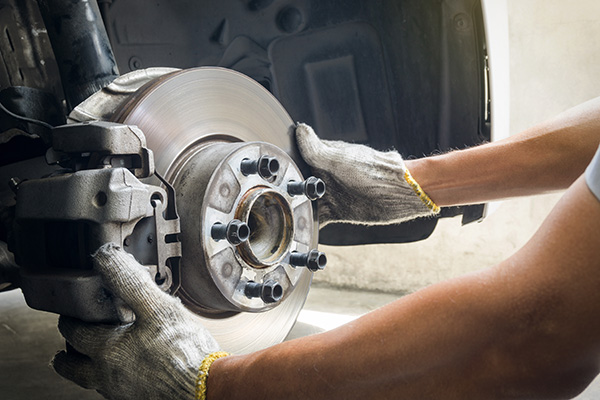
Brakes aren’t just another maintenance item—they’re a major safety system. Whether you’re making a routine stop at a red light or hitting the brakes hard to avoid a sudden hazard, your brakes need to respond instantly. But unlike an oil change or tire rotation, there’s no simple mileage rule for brake service. How often you need it depends on how you drive, where you drive, and what kind of brake components your vehicle uses.
So, how do you know when it’s time? And what exactly does “brake service” include?
Brake Service Doesn’t Follow a Strict Schedule
Unlike engine oil, which degrades over time, brake wear is based entirely on usage. If you commute through stop-and-go traffic daily, tow heavy loads, or live in a hilly area like parts of Aurora, CO, your brakes are under more stress and will wear faster. In contrast, someone who drives mostly on the highway may go longer between services.
On average, most brake pads last between 25,000 and 65,000 miles, but that’s a wide range. Similarly, rotors, calipers, and brake fluid all have their own timelines depending on driving habits and vehicle type.
That’s why regular inspections are more important than waiting for a set mileage.
What’s Included in Brake Service
Brake service isn’t always a full replacement. Depending on the condition of your system, service may include:
- Brake pad replacement: Pads wear down and need replacing before they hit the wear indicators or metal backing.
- Rotor resurfacing or replacement: Rotors can warp or wear unevenly, especially if the pads are left on too long.
- Caliper inspection: Sticking or leaking calipers can cause uneven wear or pulling to one side.
- Brake fluid exchange: Brake fluid attracts moisture and should be replaced every 2–3 years to maintain proper hydraulic pressure.
- Brake line and hose check: These carry fluid and pressure throughout the system and need to be inspected for leaks or cracks.
In some cases, your technician may recommend a complete system flush or upgraded components if your driving demands it.
Warning Signs You Shouldn’t Ignore
Even if you’re not tracking your mileage, your car will often let you know when it’s time to check the brakes. Common red flags include:
- Squealing or grinding noises when braking
- A soft or spongy brake pedal
- Vibration or pulsation when applying the brakes
- Increased stopping distance
- Pulling to one side while braking
- Brake warning lights on the dashboard
These symptoms can mean anything from worn pads to more serious hydraulic or rotor issues. Addressing them early helps avoid costlier repairs down the road—and more importantly, keeps you safer on the road.
Routine Inspections Are the Best Prevention
To avoid surprises, it’s a good idea to have your brakes inspected at least once a year or every 12,000 miles. Many drivers pair brake checks with tire rotations or oil changes for convenience.
A qualified technician can measure your remaining pad thickness, check for rotor wear, and look for signs of leaks or heat damage. This is especially important before road trips, during seasonal maintenance, or if you notice even subtle changes in braking behavior.
Catching early wear means you can schedule service before it becomes an emergency—or worse, before it puts your safety at risk.
Don’t Wait Until Something Feels Wrong
Waiting for brake failure to take action is a mistake no driver should make. Brake pads are designed to wear out, but once they do, they can chew into the rotors, cause uneven stopping, and overheat the rest of the system. A routine service that could cost a couple of hundred dollars can turn into a much bigger repair if ignored.
When it comes to brakes, peace of mind comes from knowing everything is working exactly as it should—and that comes from routine care, not last-minute repairs.
Not sure if your brakes are due for service? Let the team at Aurora AutoPros in Aurora, CO, take a look. We’ll inspect the entire system, explain what we find, and help you plan service based on your vehicle’s condition, not just the mileage on the odometer.